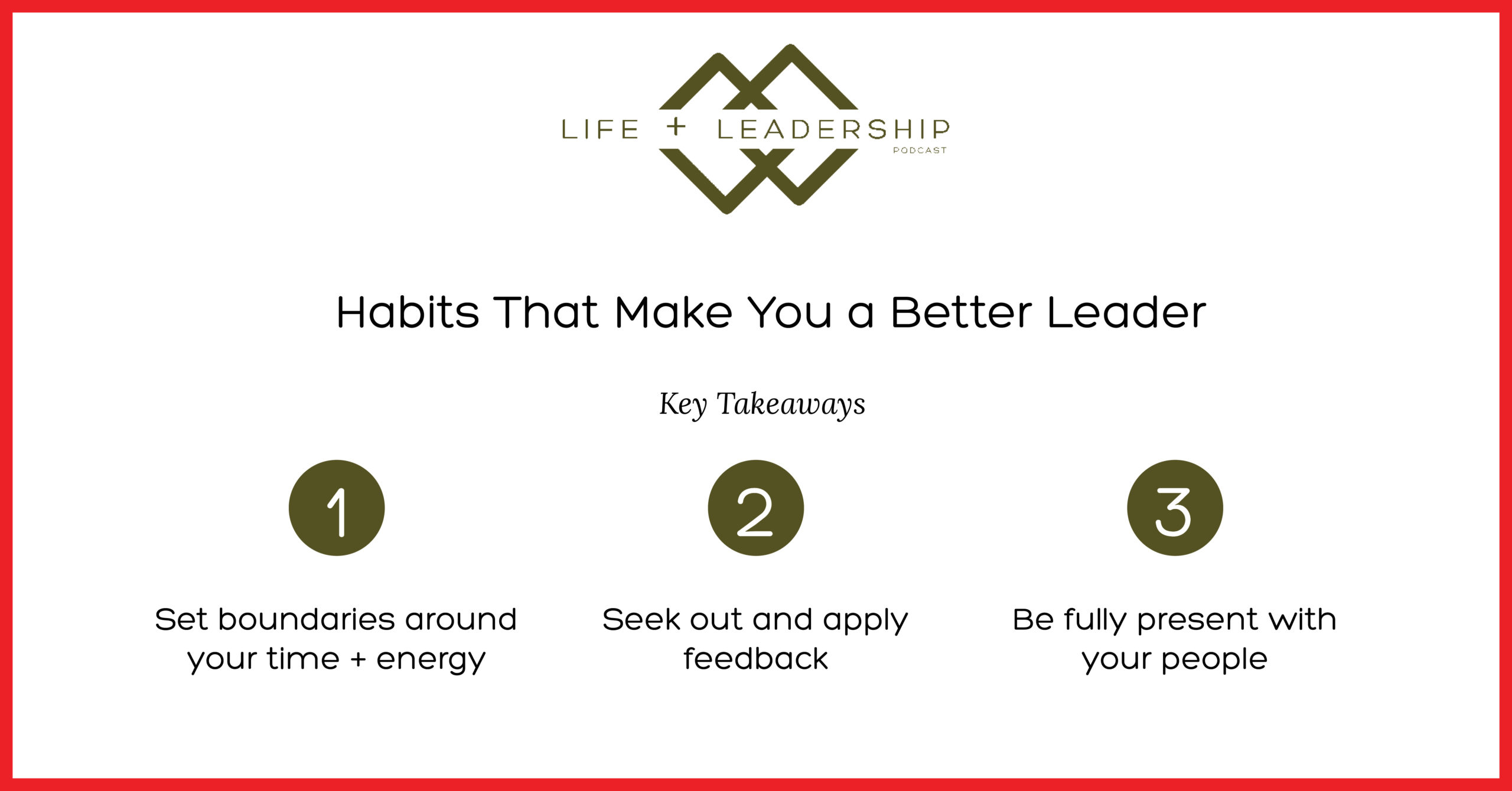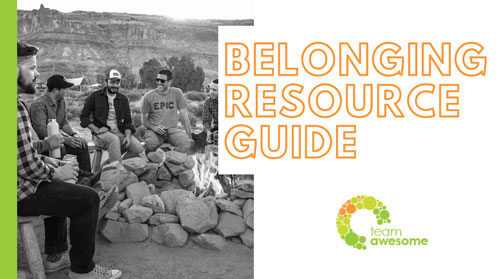A habit is not something you do sometimes. Even something you do ‘most of the time’ doesn’t qualify. To be a true habit, the practice has to be a part of you. Something you do so regularly that it’s hard to give it up.
And the quickest route to being a better leader is to establish habits that support the way you want to show up for your team.
Today, we are sharing the five areas of habit development that have the greatest impact on leadership prowess. We discuss the communication habits you can use to inspire employees, explaining how storytelling and emotional language expand our ability to communicate effectively and guide a team.
We introduce you to the power of planning to set boundaries around your time and energy and explore the tactical leadership habits that make for more meaningful and efficient meetings. Listen in to understand how being present with your people benefits both you and your team—and get our advice on how to cultivate new leadership habits that align with what matters to you!
Themes explored in this week’s episode:
- The five areas of habit development that afford the greatest impact for leaders
- Leveraging storytelling and a coaching approach to communicate effectively
- How to inspire employees with vision casting and speaking greatness over your team
- The power of short- and long-term planning to set boundaries around your time and energy
- How emotional intelligence informs our ability to lead and what we can do to develop greater self-awareness
- The tactical leadership habits that make for more effective meetings
- How setting intentions around being present with your people benefits both you and your team
- The practice of updating your calendar retroactively to become a time management ninja
- What gets in our way as we work to develop new habits
- Our advice on how to cultivate a true habit
Resources from this episode:
- Look behind the curtain at the Life & Leadership YouTube Channel
- Learn more about forming new habits on our podcast re: 90-Day Commitments
- Read about the art of storytelling in Pixar Storytelling and The Writer’s Journey
- Revisit our podcast episode on Being Present
- Explore James Clear’s approach to forming habits in his book Atomic Habits
- Check out Tegan’s blog posts on leadership habits, emotional intelligence and coaching skills
We would love to hear from you! Have an idea for a podcast or a question you want us to address? Interested in additional support, resources and workshops? Here are all the ways you can interact with us!
- Tweet us! @tegantrovato and @TeamAwesomeMKE
- Email us: tegan@BrightArrowCoaching.com and Katie@TeamAwesomeCoaching.com
- Follow us on Facebook @BrightArrowCoaching and @TeamAwesomeCoaching
- Follow us on Instagram @TeganTrovato and @katie_rasoul
- Connect with us on LinkedIn: Tegan Trovato and Katie Rasoul
- Download free tools and sign up for our newsletters, events and workshops by visiting: https://www.brightarrowcoaching.com/ and https://www.teamawesomecoaching.com/
Quotes from the episode:
Tegan—
“It is an art to be able to tell the story of a transaction in your business in a way that resonates in people’s hearts.”
“Employees want to be coached rather than told what to do all the time.”
“If you’re not sitting down and planning and thinking about the business, then who the hell is?”
“If you’re ignoring your basic needs, then you have no clue how you feel or how you’re acting.”
“I calculated how much money it cost to have multiple people in the room that don’t need to be there. You’re just bleeding cash out of every meeting room.”
“Take in the information you’re getting … and then actively share back part of yourself. Being present is a two-way street, and that’s what people want. They want to feel there’s some personal connection.”
“Am I spending time on things that move the needle in my business?”
Katie—
“When our busyness blocks us from being aware of ourselves or others, it is a problem.”
“Start and end meetings on time. Full stop. It shows preparation and respect for people’s time.”
“It takes forethought. It takes preparation. You have to set expectations with people. So, there is some up-front work and certain habitual maintenance to have great meetings. But it will TRANSFORM how people work together and how people feel about the use of their time.”
“When you are actively listening to what people are saying, what people are not saying, it is a flood of information that you would have missed had you been checked out somewhere else.”
“Some of the best stories are seemingly mundane in the sense that so many people have experienced that. I’ve transformed to see the value in these one-inch windows in humanity and life in storytelling versus feeling like I have to climb Mount Everest in order to have a story that’s meaningful.”
“We have to want to change.”
“When shit gets hard, especially in companies, then we revert back to our primal basics. Panic and fear sets in.




Recent Comments